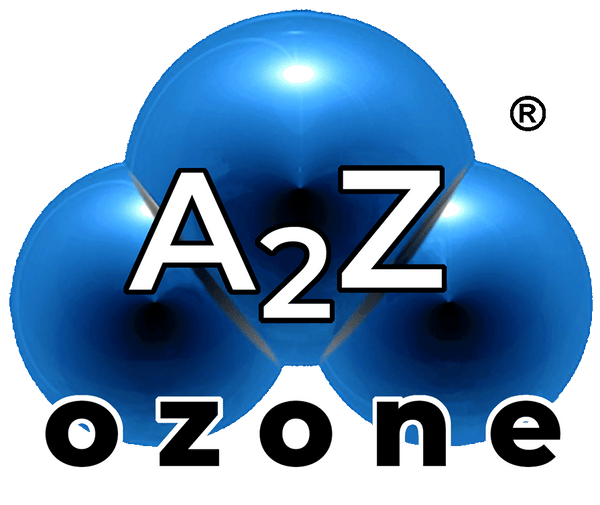
Flint Michigan. The Worst Water in the USA?
Flint, Michigan may come to mind when thinking of the cities that have the worst contaminated water supply. However, according to Scientific American, “it doesn't even rank among the most dangerous lead hotspots in America.” Aging infrastructure and pollution contribute to the widespread national problem of drinking water contamination.Lead in Drinking Water in the United States
What We Aren't Talking About
What’s in drinking water depends largely on location. “Reuters reported in 2016 that there were nearly 3,000 areas with recently recorded lead poisoning rates at least double those in Flint during the peak of that city’s contamination crisis. And more than 1,100 of these communities had a rate of elevated blood tests at least four times higher.”
An NRDC press release reported the top states with the most offenses:
- Texas
- Florida
- Pennsylvania
- New Jersey
- Georgia
- Washington
- Ohio
- California
- Arizona
- Kentucky
- Wisconsin
- Maryland
An NRDC analysis, “shows that in 2015 alone, there were more than 80,000 reported violations of the Safe Drinking Water Act by community water systems.”
Types of Drinking Water Contamination
The EPA lists type of drinking water contaminants as:
- Physical
- Chemical
- Biological
- Radiological
The map constructed by Reuters contains data from communities that make up approximately 61 percent of the U.S. population. An NRDC report also found these substances in drinking water:
- Lead
- Atrazine
- Pathogens
- Chlorine treatment by-products
- Arsenic
- Nitrates
- Radioactive contaminants
- Vinyl Chloride
- Perchlorate
- Pharmaceuticals
“America is facing a nationwide drinking water crisis that goes well beyond lead contamination,” said Erik Olson, Health Program Director at NRDC and a report co-author.
Health Impact of Drinking Contaminated Water
U.S. EPA's Chemical Contaminant Rule
The Chemical Contaminant Rules regulate over 65 contaminants in public drinking water systems.
Long-term exposure to these substances can cause:
- Cancer
- Organ damage
- Circulatory system disorders
- Nervous system disorders
- Reproductive system disorders
Lead in Drinking Water
According to the EPA, low levels of lead can cause behavior problems, slow growth and affect IQ levels.
Children
- Behavior and learning problems
- Lower IQ and hyperactivity
- Slowed growth
- Hearing problems
- Anemia
Pregnant Women
- Reduced growth of the fetus
- Premature birth
Adults
- Cardiovascular effects, increased blood pressure and incidence of hypertension
- Decreased kidney function
- Reproductive problems
Arsenic in Drinking Water
Symptoms of exposure to arsenic in drinking water from EPA:
- Thickening and discoloration of the skin
- Stomach pain
- Nausea
- Vomiting
- Diarrhea
- Numbness in hands and feet
- Partial paralysis
- Blindness
In addition, arsenic has also been linked to a number of cancers.
What Causes Drinking Water Contamination?
In the United States, we use groundwater and surface water (lakes and rivers) for drinking water. If the source of groundwater is contaminated, the water may remain contaminated. Groundwater becomes contaminated for a variety of reasons.
Pollution
Most examples of groundwater and surface water contamination can be linked to pollution. According to TIME, “publicly documented cases of PFC pollution coming from manufacturing plants, military airbases, civilian airports and fire training sites.”
Old Piping
Another common cause of drinking water contamination are the pipes that transport our water. Over time, pipes that carry water supplies will corrode. Many pipes are made of lead that then sneaks into drinking water once the pipe begins to corrode. This was the cause of the water crisis in Flint and Baltimore.
Solutions
Replacing Piping
One solution is to replace lead pipes entirely, like Madison, Wisconsin did in 2001. This eliminates the potential for lead contamination, but it is not an easy fix. Madison replaced the piping over 11 years and cost $15.5 million to complete the project.
Industrial Ozone Generators
An economical solution for the future is adding ozone installations to enhance other technologies in water treatment facilities. For over 100 years, ozone has been used for drinking water treatment. Ozone breaks the cell membrane of pathogens, resulting in removal of bacteria and viruses, phenols, iron, and manganese. It controls odor, color, and taste. Also according to University of Massachusetts, ozone is not effective against heavy metals.
Learn more about our industrial ozone generators here.
What Can I Do About Water Quality?
After learning about water issues in the USA, that seems like an overwhelming question to answer. However, the Town of Simsbury, Connecticut provided their community with answers. See their suggestions to reduce pollution, conserve water, and how they support their town's residents when personal crises develop. Some of their suggestions:
Reducing Water Pollution:
- Do not dispose of cooking oil and grease down the drain
- Do not flush household chemicals and cleaning agents (They have a dropoff collection site in their community.)
- Do not dispose of medications down the toilet
- Conserve water by washing dishes and clothes with a full load only
Personal Ozone Generators - The Aqua-Series from A2Z Ozone
You may be surprised to hear me say that personal ozone generators are not the end-all solution. As you saw in the University of Massachusetts PDF, heavy metals will not be removed with ozone.
The Importance of Filtering Water
You must filter your water. We use Reverse Osmosis at the A2Z Ozone shop. Many water bottling companies do that, too. Also, start with a clean source of water, as clean as you can get.

Always Test Your Water
As we've said before, testing is crucial. Knowing what is in your water is half the battle. You will need to contact a reputable testing facility and send them your water, first non-treated, then treated.

Testing Your Ozone Output
Another important step is knowing that your ozone generator is producing between 0.4 and 0.6 ppm of ozone in your water. Take a sample of ozonated water, and immediately test it with SenSafe Ozone Check Strips.



